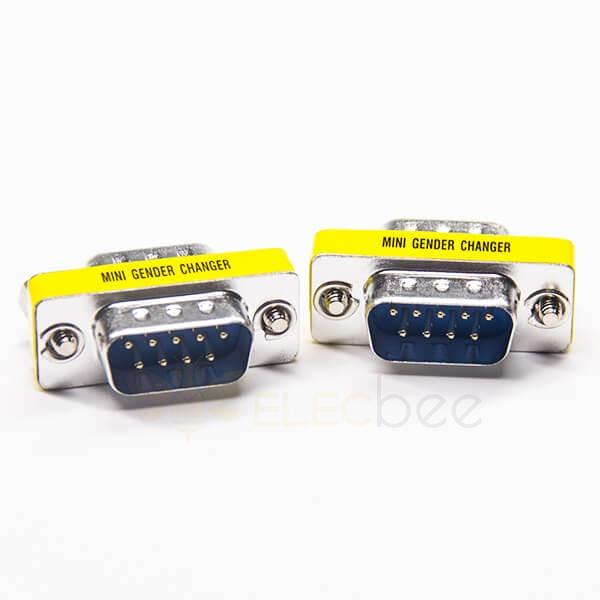D-sub connectors have long been the backbone of electrical and electronic connections, known for their distinctive D-shaped metal shield. These versatile connectors offer a wide range of applications and are available in various types, each designed for specific pin or socket configurations. This comprehensive guide will explore the main types of D-sub connectors, their unique features, shell sizes, and common applications. From the versatile Type A (DA) to the compact Type E (DE), we will unravel the potential of these mighty connectors, empowering engineers and professionals to make informed decisions in their connectivity endeavors.
A Brief History of D-Sub Connectors
D-sub connectors, also known as D-subminiature connectors, are a type of electrical connector commonly used in computers, telecommunications equipment, and other electronic devices. They were first developed by ITT Cannon in the 1950s as a smaller and more reliable alternative to the larger and bulkier DB connectors used at the time.
D-sub connectors were widely adopted in the computer industry in the 1980s and 1990s, particularly for connecting peripherals such as printers, modems, and mice. The 9-pin connector was commonly used for serial ports, while the 25-pin connector was used for parallel ports.
Over time, as computers and other devices became smaller and more compact, other connector types such as USB and HDMI began to replace D-sub connectors in many applications. However, D-sub connectors are still used in some specialized applications such as aerospace, military, and industrial equipment.

Types of D-sub connectors
1. D-Subminiature Type A (DA): Versatility for Video and Industrial Systems
The Type A (DA) D-sub connectors are renowned for their versatility and find applications in video connections, industrial control systems, and rotary/linear encoders. With a shell size corresponding to 15 pins or sockets, these connectors excel in delivering reliable signal transmission. The compact design of Type A connectors makes them suitable for space-constrained applications while ensuring secure connections and efficient data transfer. In video applications, Type A connectors provide a reliable interface for high-quality video signals, making them an integral component in multimedia setups and broadcasting.
2. D-Subminiature Type B (DB): The Timeless Legend for Data Transfer and Audio Applications
Type B (DB) D-sub connectors have long been a standard choice in the industry, featuring a shell size corresponding to 25 pins or sockets. Originally used for parallel printer ports, DB connectors have expanded their applications to various data transfer and audio systems. Their robust design and reliable performance make them suitable for analog and digital audio connections in recording studios, sound systems, and specialized data communication. Type B connectors continue to be a timeless legend, ensuring seamless data transmission in diverse audio and data applications.
3. D-Subminiature Type C (DC): Empowering Industrial Automation and Data Acquisition
Type C (DC) D-sub connectors, designed with a shell size corresponding to 37 pins or sockets, are powerhouses when it comes to industrial automation and data acquisition systems. Their robust construction and high pin count make them ideal for demanding environments, offering exceptional performance in industrial control equipment, factory automation, and data acquisition applications. Type C connectors provide reliable connectivity, enabling efficient data acquisition and control in complex industrial setups. Their sturdy design ensures secure connections and the ability to withstand harsh operating conditions.
4. D-Subminiature Type D (DD): Managing Complex Interconnections with Unparalleled Pin Count
Type D (DD) D-sub connectors, with a shell size corresponding to 50 pins or sockets, are renowned for their ability to manage complex interconnections. With an unmatched pin count, these connectors find applications in industrial control systems, instrumentation, and other setups that require a large number of connections. Type D connectors excel in handling intricate wiring configurations, providing a robust and reliable solution for complex interconnections. Their design ensures secure connections, minimizing the risk of signal loss and enhancing the overall performance of the connected systems.
5. D-Subminiature Type E (DE): Compact Marvels for High-Density Connectivity
Type E (DE) D-sub connectors, featuring a shell size corresponding to 9 pins or sockets, offer a compact yet powerful solution for high-density connectivity. These connectors are commonly used in applications such as video and graphics connections, where space is limited but reliable connections are crucial. Type E connectors provide a reliable interface for transmitting high-quality video signals, making them essential in multimedia setups, advanced display systems, and graphics-intensive applications. Their compact design ensures efficient use of space without compromising performance or signal integrity.
Conclusion
D-sub connectors continue to be the powerhouse of connectivity, offering versatile solutions for a wide range of applications. Understanding the main types of D-sub connectors, from the versatile Type A (DA) to the compact Type E (DE), empowers engineers and professionals to select the right connectors for their projects. By harnessing the potential of these mighty connectors, professionals can ensure reliable and efficient data transmission, robust industrial control, and seamless audio and video connections. With their durability, performance, and versatility, D-sub connectors remain a vital component in the world of electrical and electronic connectivity.
